By Kenneth Richard on 1. July 2019
Marine species evolved, thrived, and diversified in 35 to 40°C ocean temperatures and CO2 concentrations “5-10x higher than present-day values” (Voosen, 2019 and Henkes et al., 2018).
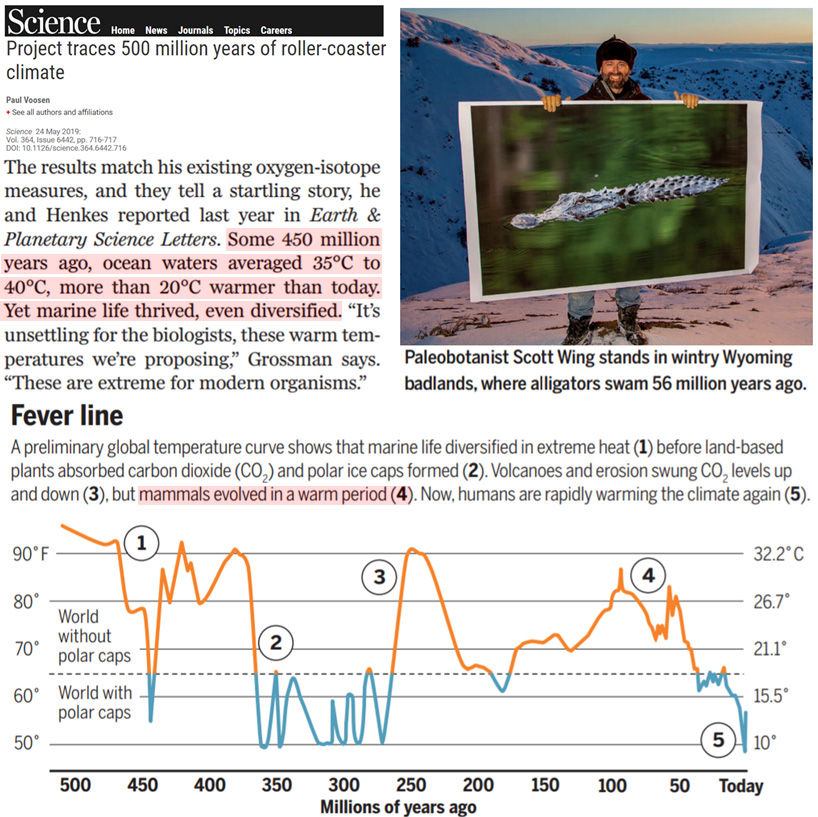
Image Source: Voosen, 2019
I. The insignificance of modern “global warming”
Today’s ocean temperatures average about 16°C. CO2 levels hover around 400 parts per million (0.04%).
The oceans have warmed at a rate of just 0.015°C per decade since 1971 in the 0-700 m layer according to the IPCC (2013). This warming rate isn’t detectable when considering overall long-term changes in this layer (Rosenthal et al., 2017) during the Holocene.
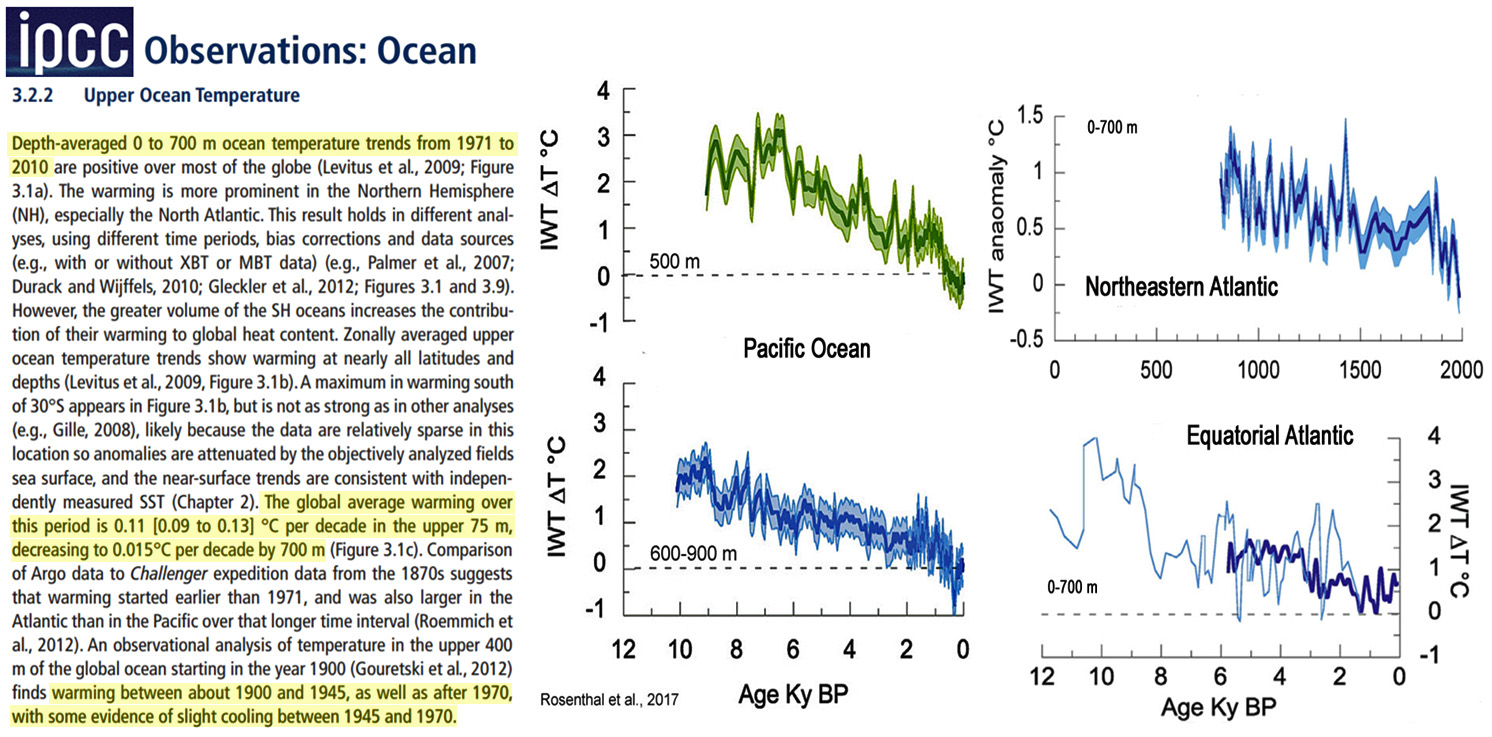
Image Source: IPCC (2013), Rosenthal et al., 2017
The global oceans have only warmed 0.09°C in the 0-2000 m layer since 1955 (Levitus et al., 2012). This less than one-tenth of a degree Celsius thermal change represents 93% of the modern “global warming” manifestation.
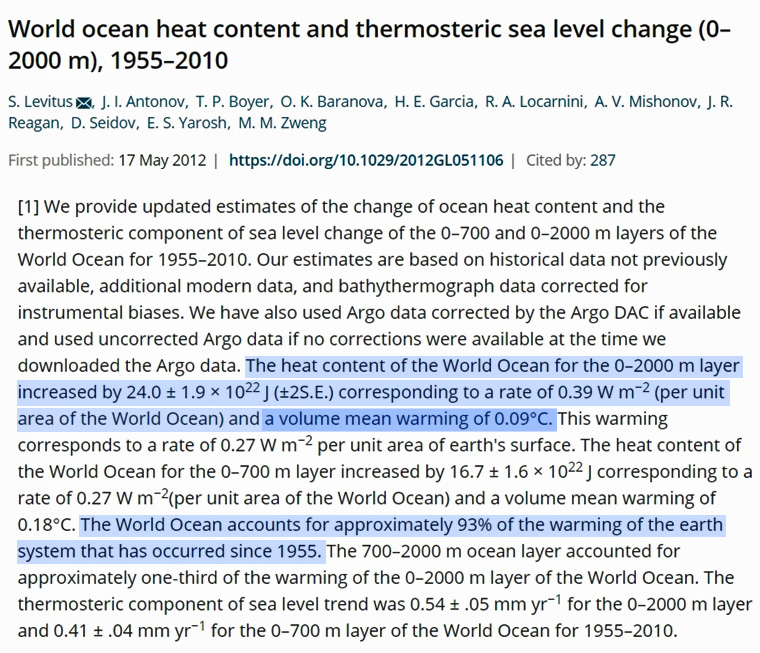
Image Source: Levitus et al., 2012
The oceans have warmed merely 0.021°C since 1994 (Wunsch, 2018), with a cooling trend in the abyssal waters.
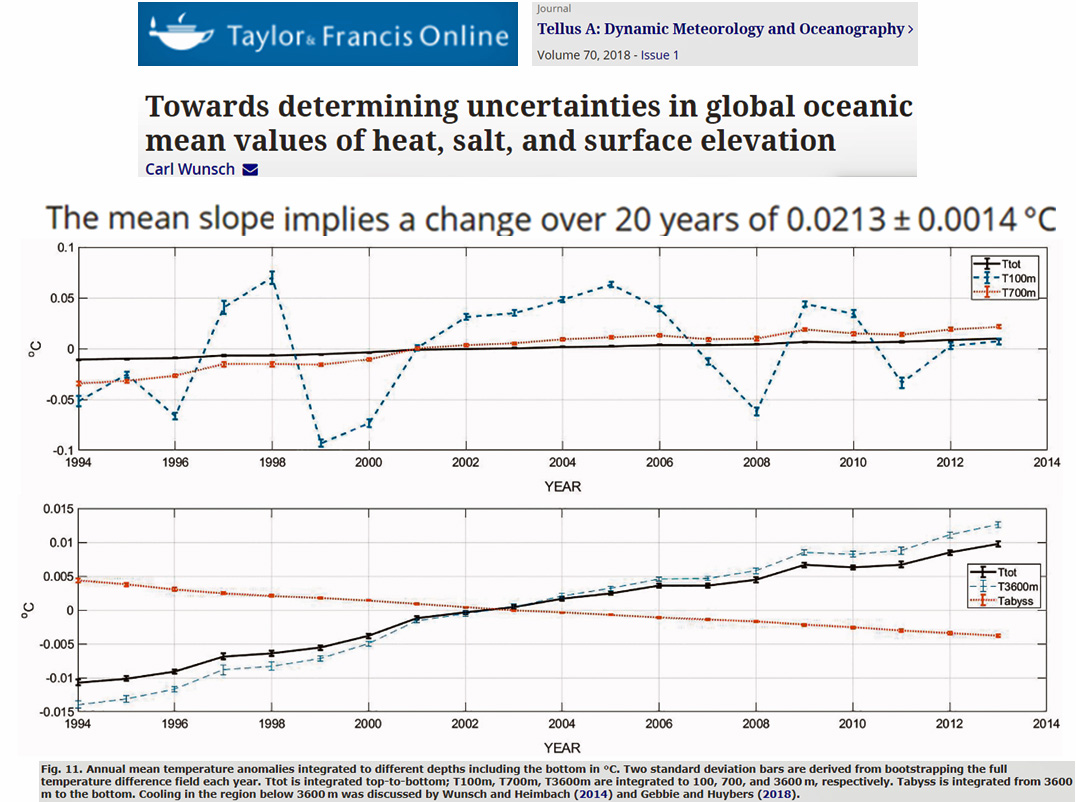
Image Source: Wunsch, 2018
In the near-surface layer of the ocean (0-20 m), temperatures rose more than 5 times faster from 1900 to 1945 (~1.2°C, 0.27°C/decade) than they did during 1945 to 2010 (~0.3°C, 0.046°C/decade), which is the opposite of what would be expected if CO2 emissions were driving thermal changes in the ocean (Gouretski et al., 2012).

Image Source: Gouretski et al., 2012
II. The astounding warmth of the distant past – when marine species thrived
A year ago, Henkes et al. (2018) determined marine animals “thrived” in water temperatures that averaged 35-40°C in “widespread regions of the oceans,” which is more than 20°C warmer than today’s average ocean surface temperature (~16°C).
The authors note that today’s tropical temperatures (25-30°C) can be equated to the “icehouse” conditions of the Carboniferous.
Further, when marine animals thrived in waters >20°C warmer than today, this warmth was accompanied by CO2 levels “5-10x higher than present-day values” – about 2000 to 4000 ppm.
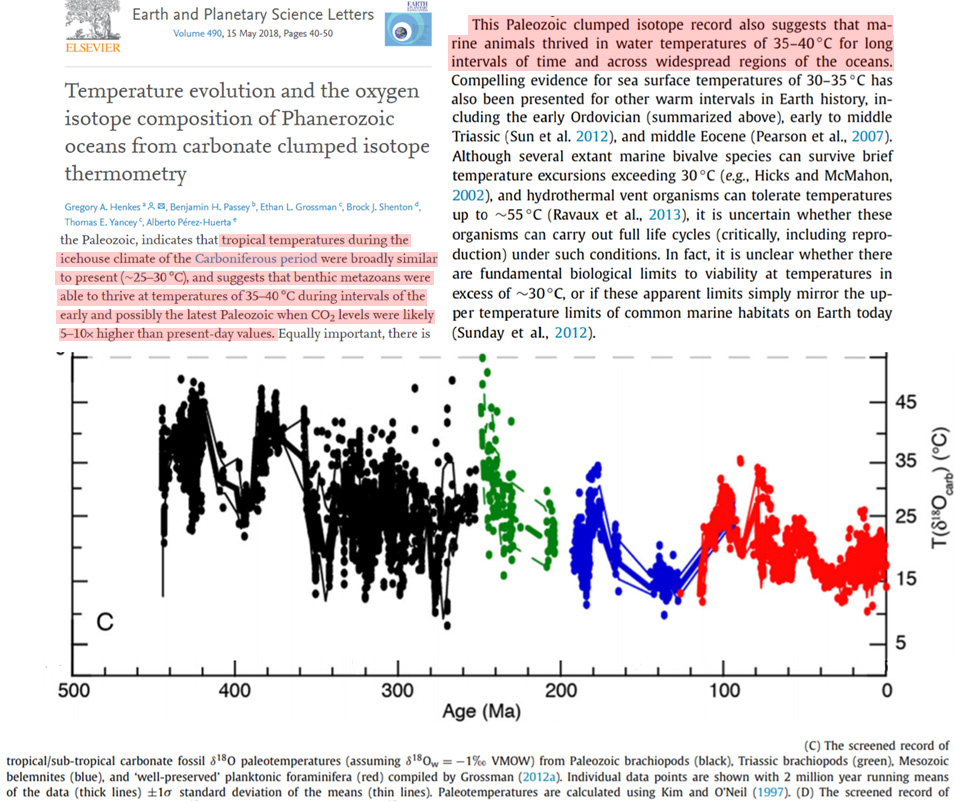
Image Source: Henkes et al., 2018
In a new paper published in Science, Voosen, 2019 uses the data compiled by Henkes et al. (2018) to further reiterate
“Some 450 million years ago, ocean waters averaged 35°C to 40°C, more than 20°C warmer than today. Yet marine life thrived, even diversified”
and to construct a graphical representation of global ocean temperatures from the Paleozoic onwards. Voosen affirms “marine life diversified in extreme heat” and “mammals evolved during a warm period.”
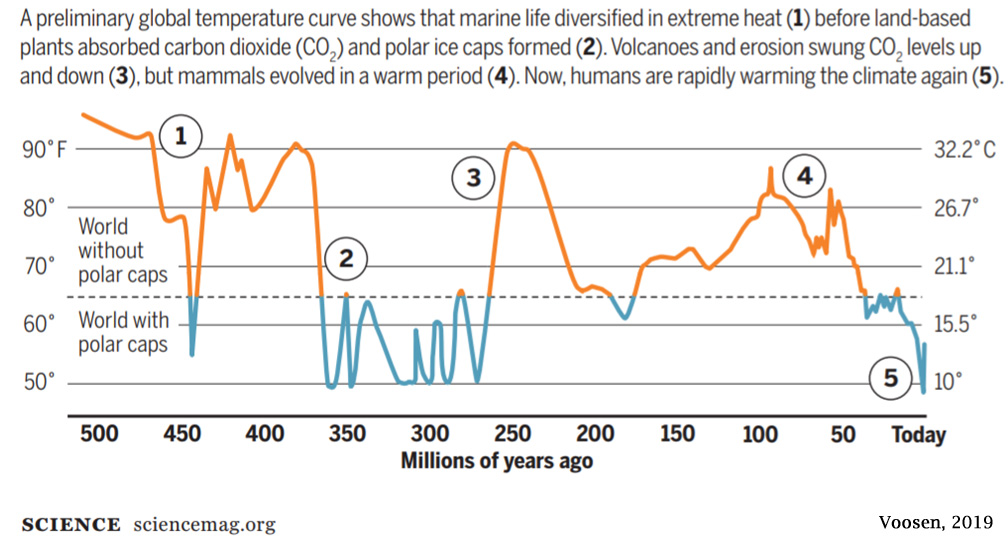
Image Source: Voosen, 2019
In sum, coupling the 1) insignificant thermal ocean changes during modern times and the 2) extreme warmth (and high CO2 levels) of the distant past would seem to support the contention that marine animals are not currently in any sort of obvious danger from either rapid warming or high CO2 levels.


